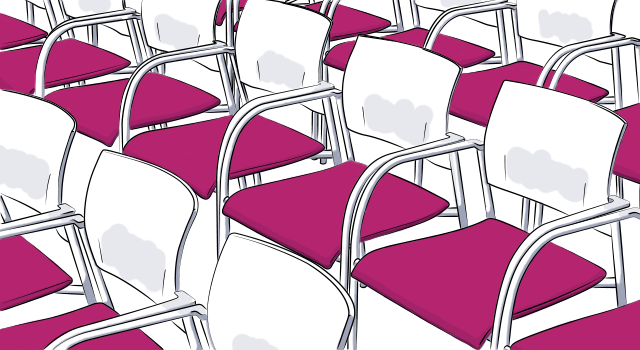
Wednesday Wisdom: Is Open or Assigned Seating the Right Choice?
It’s a key question for every event”open or assigned seating for guests? Do you let your guests choose where they would like to sit for the product rollout or the gala dinner? Or do you spend time working with your client on detailed seating arrangements?
There are pros and cons to each style of event seating, and there are specific events where one choice is the clear winner. Read on for a primer on the difference between assigned and open event seating, and the types of events where you may want to consider one over the other.
Does open or assigned seating really make a difference at events?
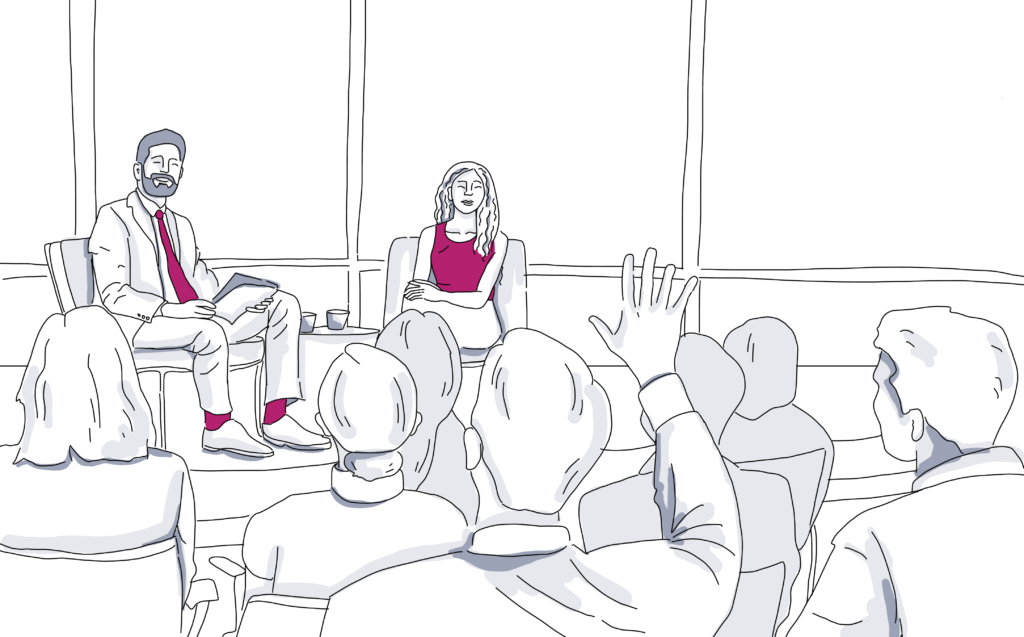
Yes. People are somewhat territorial about where they sit. A 2018 study from the University of Bologna found that university students repeatedly choose the same seat during lectures. The researcher concluded this habit gives people a sense of control over their environment, and lets them focus on their goals with minimal interference.
What does this mean for multi-day corporate workshops or one-off social events? We dive into the pros and cons of each approach below, but this research suggests that”when in doubt”assigned seating is the right call. Guests don’t have to stake their claim to a seat or vie for a ˜good’ seat, because their domain is already established by the event planners.
Still, there are clear benefits to open seating at specific types of events. Let’s take a closer look:
What is open event seating? Plus its pros and cons
In open event seating, attendees choose where they will sit to enjoy a meal, performance, or presentation.
Pros:
- Guests have more autonomy regarding where they sit and who they sit near.
- Contributes to a relaxed, informal event vibe.
- Doesn’t require a seating plan.
Cons:
- Confusion about where guests can sit.
- Precious event time wasted with guests milling around, asking if a seat is available.
- Possible frustration for guests who are slow and get ˜stuck’ with seats in the back.
- Possible anger over claimed seats being taken.
- Some overcrowded tables, and some sparsely populated. (Guests dragging chairs between tables isn’t unheard of.)
What is assigned event seating? Plus its pros and cons
With assigned seating, each place setting and chair has a designated guest. For business conferences, this means auditorium or classroom style setups will include cards identifying where every guest should sit. At weddings, parties, and galas, the event design will include a detailed seating plan.
Pros:
- Less confusion about where guests should sit.
- Better control during event check-in.
- Ability to track who has arrived, so the event can start on time.
- Option to separate guests who don’t get along.
- Keeps food and drink service confusion to a minimum.
- Lets you keep track of guests with food allergies or dietary restrictions, and ensures their food goes to the right person.
Cons:
- Some guests may not like their assigned seats.
- Some guests may even have their feelings hurt or feel insulted by their seat location.
- Time-consuming process.
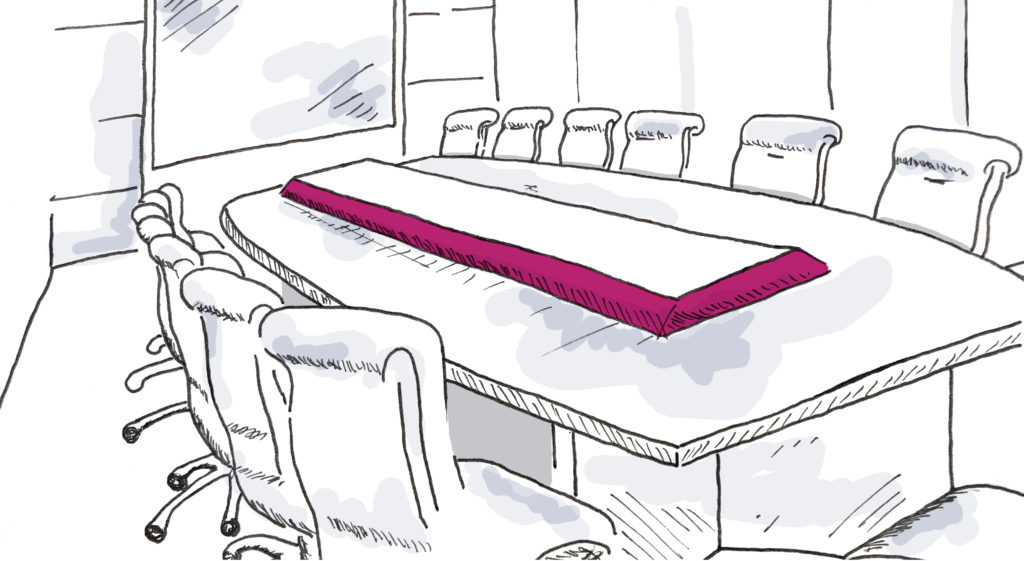
Open seating vs. assigned seating. Can an event have both?
Yes! At many events, a blend of open and assigned seating is a good choice. For example, if a couple prefers no assigned seating at their wedding, you should recommend assigned seating for immediate family at least. This will avoid unnecessary drama when the close aunt of the bride finds herself stuck near the exit sign.
Another hybrid model is assigning guests to specific numbered tables, but allowing them to select their seat.
A hybrid is also a good idea at some awards ceremonies and business conferences. In these instances, the nominees, speakers, and VIPs should have assigned seats down front, while the rest of the guests can find place settings for themselves.
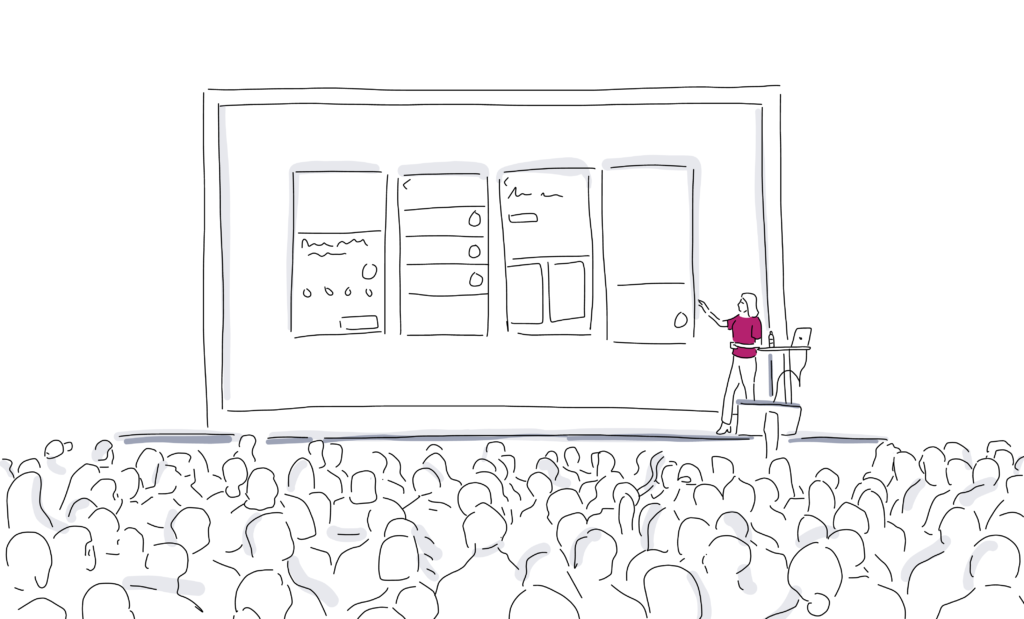
Next, let’s explore which seating style works best”open, assigned, or a hybrid”at 9 different event types.
1. What type of seating should networking meetings have?
Assigned seating
Assigned seating typically works best, at least during the start of the networking event. The goal of this event is fostering communication between people who don’t know each other well, and the event planner has more control over this with assigned seating. Consider switching up the assigned seats if the event takes place in several locations throughout the day or weekend”so guests have the opportunity to network with different people.
Before the closing dinner, schedule a cocktail hour-style reception where guests have the option to stand and mingle, engaging in deeper conversations with people they clicked with during earlier event icebreakers or Q&As.
2. What type of seating should industry conferences have?
Open seating, assigned seating
Industry conferences usually include keynote talks, and breakout panels and learning sessions. For these parts of the day, assigned seating isn’t often necessary except in the first row or two, which should be reserved for speakers, hosts, and VIPs. If you expect a large turnout, with some seminars that are far more popular than others, include a signup requirement during the event registration period to prevent overflow crowds.
If the event ends with a banquet or buffet-style dinner, assigned seating will help smooth keep the meal on track.
3. What kind of seating should fundraising galas have?
Assigned seating
Assigned seating is the norm at sit-down fundraising galas for nonprofit organizations, whether the service style is formal or a buffet. With assigned seating, you can ensure regular donors, presenters, and other VIPs are seated near the stage for speeches, or within view of a pianist or a string quartet.
Create a seating layout that includes guest names by every chair, and notes guests with food allergies or dietary restrictions.
4. What type of seating should business meetings have?
Assigned seating
Whether it’s a shareholders meeting, a company-wide meeting, or a sales meeting”assigned seating is the best choice and will often follow the business hierarchy. The highest-ranking individuals, such as the company CEO or the director of sales, will sit at the head of the table or in the middle of the table’s long side. They’ll then be flanked by regional CEOs, vice presidents, and division managers.
Companies with a flat organizational structure are often less rigid, but executives and managers will need a central seat at the table if they are guiding the meeting.
All company business meetings benefit from time for unstructured socializing, without assigned seats at some point during the event. Organize a cocktail hour with appetizers before a sit-down meal, so coworkers can have conversations and catch up.
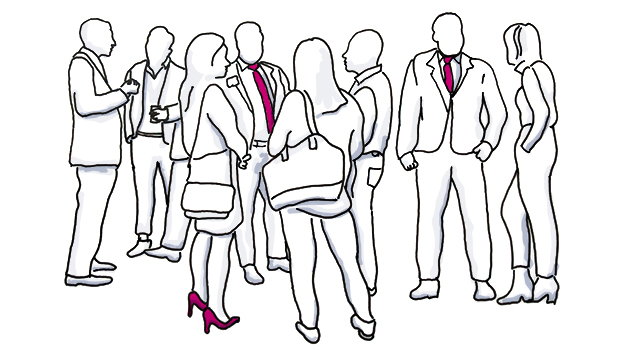
5. What type of seating should reunions have?
Open seating
At reunions of every type, open seating is the clear winner when combined with buffet-style food service. In the case of family reunions, opt for family-style tables if possible and allow people to find their spots. Usually, this is managed without too much trouble. Another good option for an outdoor family reunion is providing randomly set seating and tables. Adirondack chairs around the fire pit, tables and chairs underneath a tent, and some tables and chairs under a few shade trees are all welcome spots for guests to gather.
Class reunions”whether high school or college”are awkward enough without guests stuck at a table with the person who teased them mercilessly in school. For the most part, organize school reunions as standing events with informal open seating available for the meal.
6. What type of seating should company parties have?
Assigned seating, hybrid
For more formal company parties, such as big anniversary celebrations, assigned seating gives the event an extra posh quality. For more relaxed occasions, such as a company holiday party or employee appreciation day, assign guests to tables, but not necessarily to particular seats. Talk with your client and suggest seating specific departments at the same table or near each other, because they’ll know each other best and want to celebrate together.
7. What type of seating should VIP events have?
Assigned seating
Giving every guest a specific seat is a must at VIP events, with high ticket prices or well-known guests. With assigned seats, you can personalize swag bags and manage special dietary requests.
The table layout is an essential focus for VIP events where you are often managing outsized egos. If it’s a standard banquet style layout, include special offerings at both sides of the hall so that no guests feel forgotten. For example, one side of the banquet room can have the bar with jaw-dropping ice sculptures, while the other end features live music by a cellist.
8. What kind of seating should awards ceremonies have?
Assigned seating
Whether the awards ceremony is taking place in a theater or a banquet room, assigned seating is essential. The nominees should be assigned seats within walking distance of the podium so they don’t have to struggle to reach the stage”a particular issue for guests in gowns.

9. What type of seating should weddings have?
Assigned, hybrid
At highly formal weddings, always opt for assigned seating”it gives the event the sophisticated quality you want to achieve.
Also, choose assigned seats for large weddings and less formal weddings where couples express concerns about interpersonal drama. With assigned seats, guests won’t vie for the best view of the couple when they enter the banquet hall, or accidentally choose a seat next to their least favorite cousin.
For small, informal weddings you could do open seating for all guests except the immediate family and the wedding party. For example, open seating is a great option for small beach, barn, or barbeque weddings where all the guests get along and can be trusted to find their seats quickly and politely. What constitutes a small guest list? Under 50 guests.
Most events require at least some assigned seating, and you probably noticed the pros of the assigned style far outweigh the advantages of open seating. But the event seating rules are not hard and fast, and there are times when a more flexible, informal approach is your best bet. Keep this page bookmarked for reference, and as a quick explainer for clients. That way, you can move past the decision phase quickly, and get started on your table layout and seating charts early.
Now You Know How to Choose Open or Assigned Seating for Your Event!
Next up, take a deeper dive into the science of assigned banquet seating. Or, request a free demo of Social Tables’ event planning software and discover how it makes quick work of seating charts.

